© XAVIER RIBAS - Nitrate_Three Moves Are As Bad As A Fire (2014) 2 Pigment prints on Harman Baryta paper 110 x 253 cm. Ed of 3+1ap.
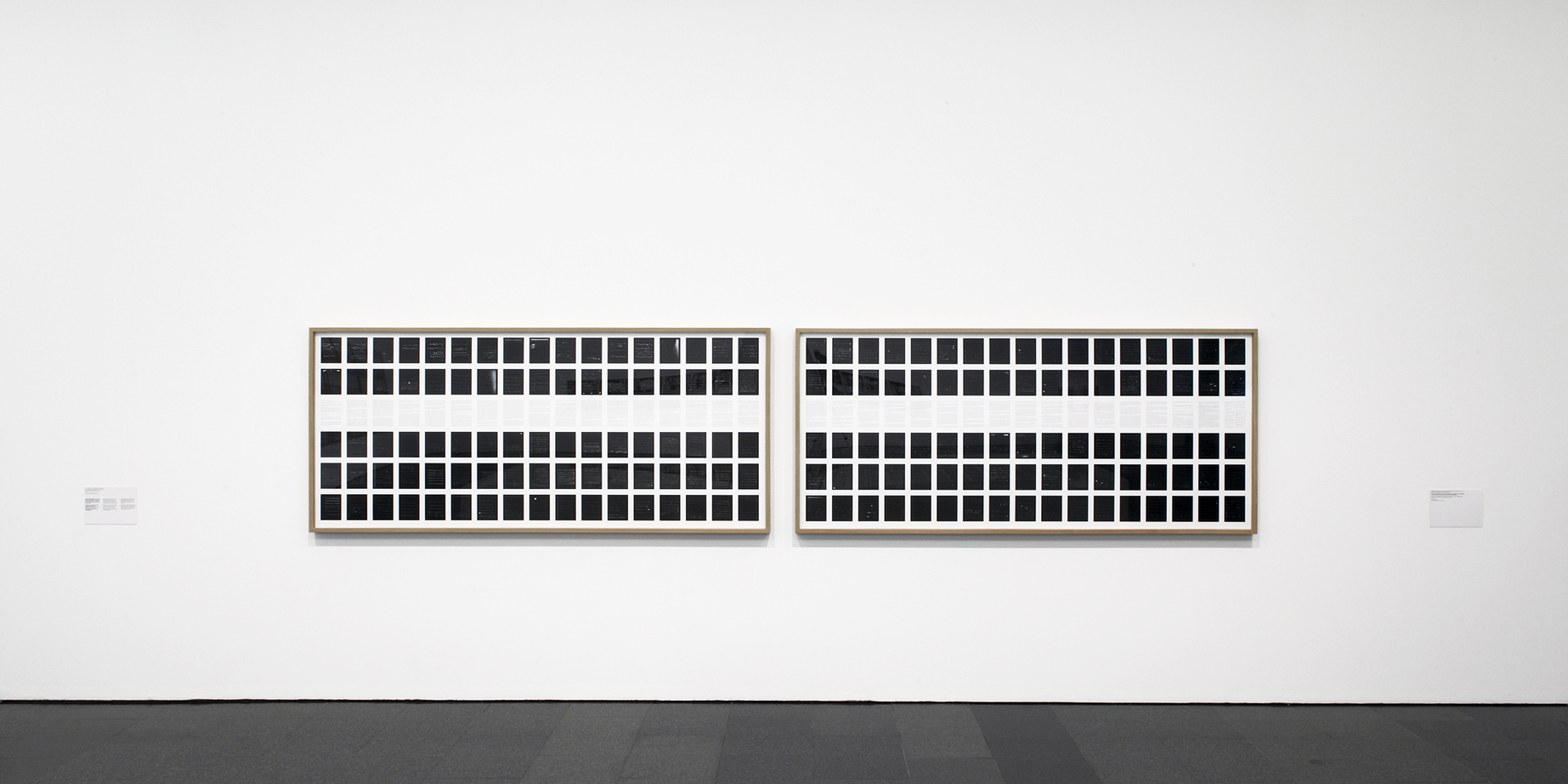
Three Moves Are As Bad As A Fire (2014). Installation MACBA [Installation photograph: Marc Roig]
170 photographic glass plates of the planet Mars taken by The Lowell Expedition to the Andes from Oficina Alianza during June and July 1907. Lowell Observatory, Flagstaff, Arizona.
Text: Extracts from field notes written by Lowell Expedition members during their stay at Alianza and from subsequent research papers and magazine articles. David Peck Todd Papers, Yale University Library, New Haven, Connecticut.
The Lowell Expedition to the Andes stayed for six weeks at Oficina Alianza between June and July 1907. The members of the expedition travelled to South America to take photographs of Mars that would support the theory of life on the planet, strongly advocated by its patron Percival Lowell, a wealthy amateur astronomer and writer.
Around 1907, Mars embodied a utopian vision of scarce but shared resources and advanced, intelligent beings, an ancient planet that seemed to have lost most of its water. Percival Lowell's theory of life on Mars pictured a planet whose inhabitants had built massive irrigation works to transport water melting seasonally from the ice caps to irrigate the warmer, desertified lands of the planet's equator. Lowell imagined a Martian society that had overcome 'national' differences for the purpose of managing and sharing the planet's scarce water resources. For Percival Lowell the theory had a poignant reality, for he believed that Mars was the future of the Earth.
Renowned astronomer David Todd was in charge of the expedition, accompanied by his assistants, his daughter, and his wife Mabel Loomis Todd. Over six weeks the they produced 170 glass plates with about 10,000 negatives of the planet. The expedition members also wrote personal diaries and took notes on their work, which were later published in various articles in magazines such as Cosmopolitan, Popular Astronomy and The Century.
Inspired by numerous horse and train rides across the desert, their writings contain meditations on the dryness of the landscape and the process of desertification of the earth as seen in Atacama, projecting onto the Martian geography observations made in the desert, thus superimposing a lived geography and an imagined, distant one.
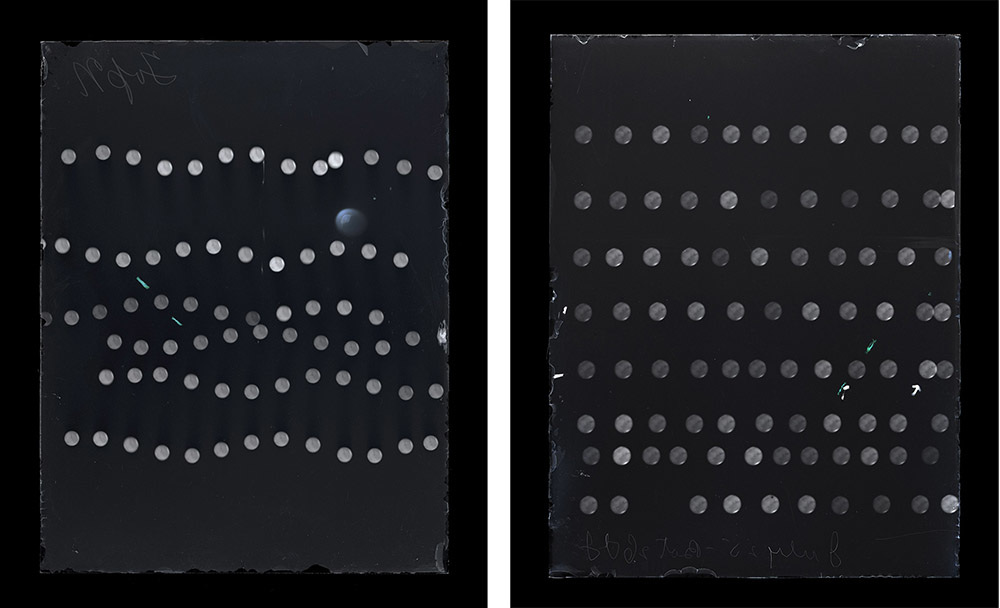
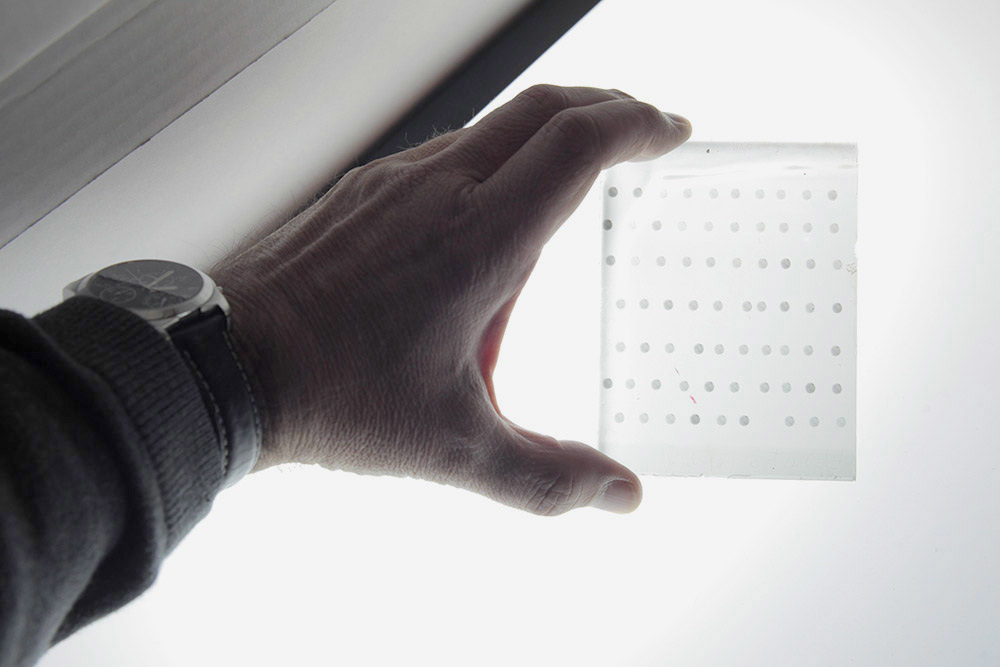
Mars plates from The Lowell Expedition to the Andes (1907)
---

Three Moves Are As Bad As A Fire
"The impossible challenge of demonstrating more authority by presenting less detail "
Maria Lane
---
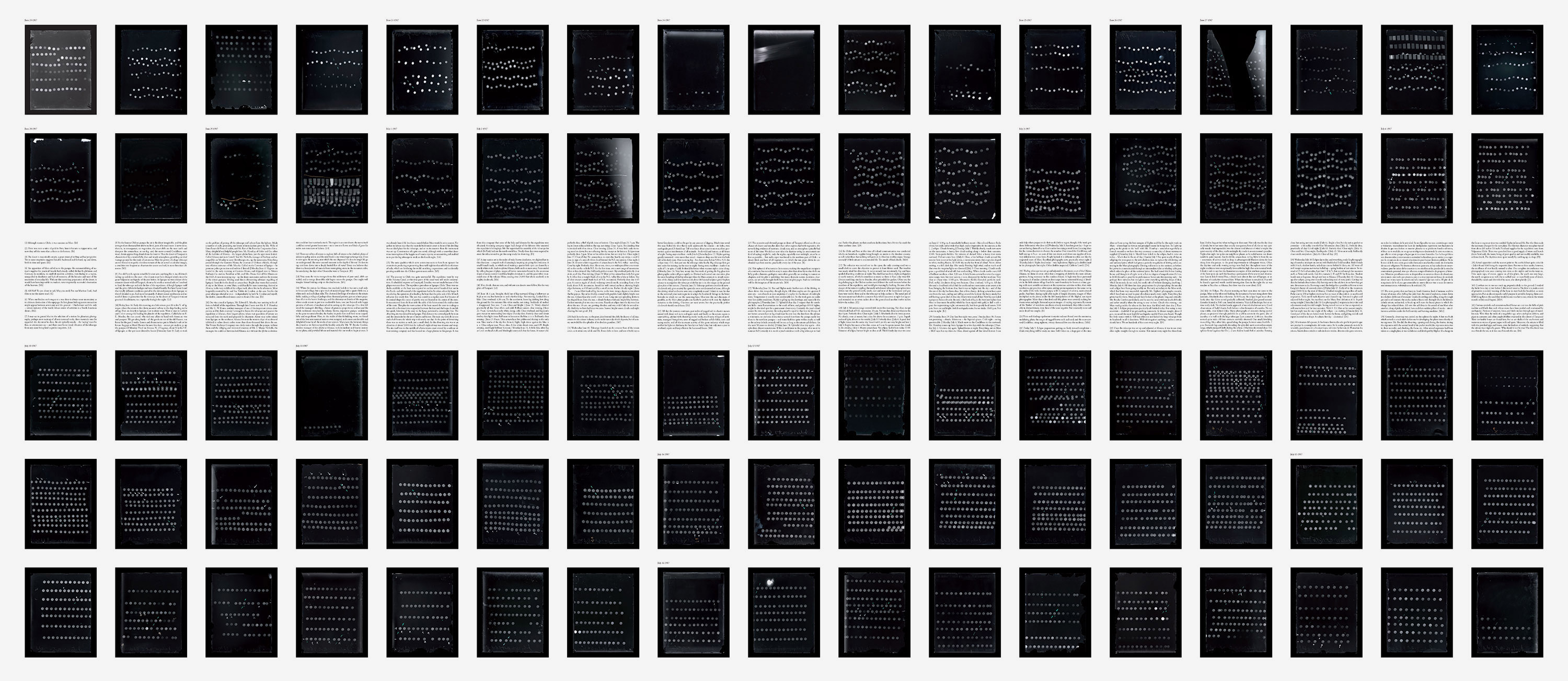
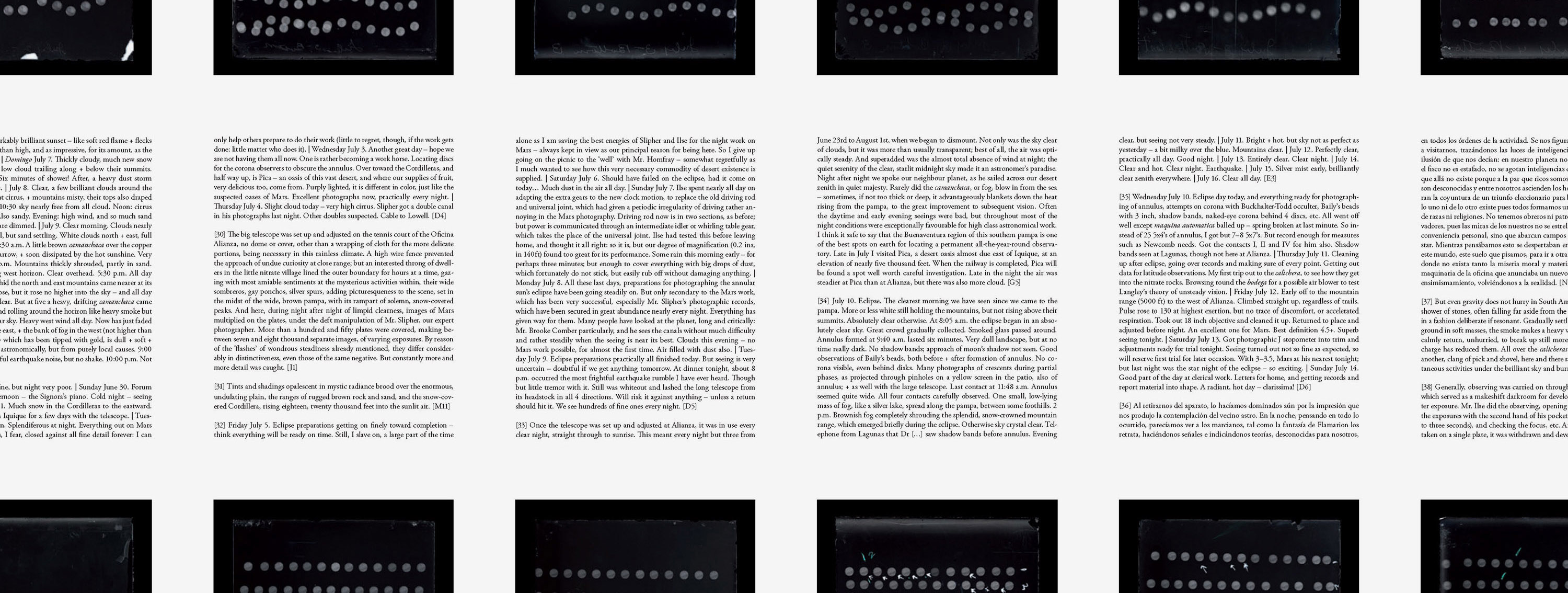
Three Moves Are As Bad As A Fire [details]
[90] It is not a historical anomaly that there exist 13,058 photographic negative images of planet Mars taken from Oficina Alianza by the Lowell Expedition, between the 20th of June and the 31st of July 1907, while there exist none of the killing of hundreds of nitrate workers in the School of Santa Maria in Iquique, on the 21st of December of that same year.
It is also not a historical inaccuracy that it is not known how many men and women, exactly, were shot dead that day.
The handful of photographic images that still exist today of the events leading to the shooting of the nitrate workers by the Chilean army are reproductions of reproductions of reproductions of the original prints. Not found the negatives and the original prints; the figures visible in the contemporary reproductions are just discernible, an ever-vanishing trace of crowds of men marching, Panama hats on, army officials on horses, flags and banners, the school's front façade and the circus tent opposite, moments before the shooting... These reproductions pass on from publication to publication, fading as if they were oral memories.
It is also not a historical anomaly that all the known photographs of Oficina Alianza, or of any nitrate oficinas of the time, preserved as handsome albums in archives, libraries and museums, were produced by the nitrate producers themselves, as representations of investment or as documentation of the production cycle. These industrial objects now pass as the official visual history of nitrate.
Imaging the nitrate industry of the time, one must work against the grain, reading the out-of-frame and between-the-lines of those photographs and their captions, charged with the rhetorics of capital. One has to work against them, as the time they were made was a time of great unrest and violent repression of the nitrate workers, a memory they do not contain.
In those photographs the nitrate workers appear caught not in the moment of work but still, mostly looking at the camera, in the open fields or in front of machinery. Their detained bodies 'in the shape of work' –their poses as if working, presumably following the photographer's instructions– inhabit the moment of photography. In order to see the worker at the very moment of work one has to find other photographs.
The photographic negatives made by Mabel Loomis Todd to illustrate her article The Nitrate Wealth of Tarapacá –an article never published– while staying at Oficina Alianza with the Lowell Expedition, are some such other photographs. Although they operate within a 'border of Empire' logic, seeing natives and workers not as individuals but as part of the scene, they do not associate the handsomeness of the photograph with that of capital. They are a visual diary of a frontier territory, capturing fleeting moments of hard labour around the nitrate fields of Alianza, without a tripod, making visible the movement of the bodies of workers and animals at the very instant of exploitation.
Around 1907, Mars embodied a utopian vision of scarce but shared resources and advanced, intelligent beings, an ancient planet which seemed to have lost most of its water. As Percival Lowell put it, Mars was the future of the Earth, and the abode of life. In July 1907, Mars became a desert narrative imagined from the driest landscape on Earth. But these 'bullets from Mars' – as Lowell called them – are not only the photographic negatives of an illusion, but also the counter-images of an imaginative geography. And of its fallen nitrate workers.
Extract from TMAABAAF © Xavier Ribas
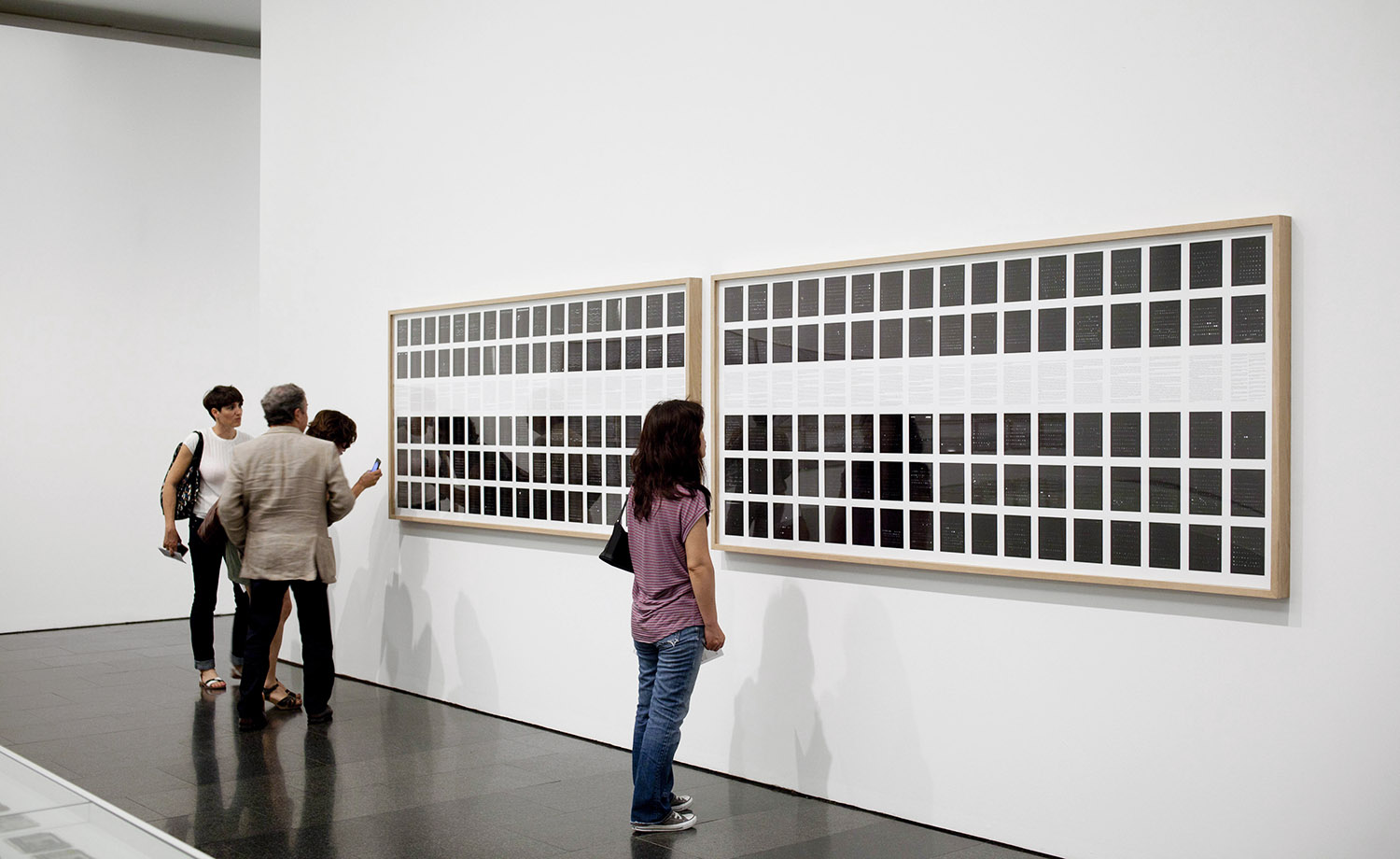
Three Moves Are As Bad As A Fire (2013). Installation MACBA